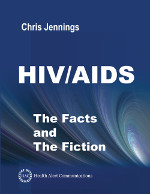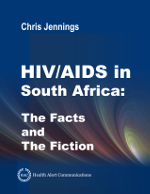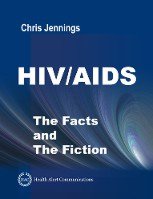 “AIDS is from America”
“AIDS is from America”
Paris. Circa 1986. I was sitting in a hotel lobby, talking with some European and African people about AIDS. The Africans said everyone in Africa thinks AIDS comes from Europe. The Europeans said people in Europe think AIDS is from America. I said that most Americans think AIDS comes from Africa. Everyone laughed.
The opinion of the Europeans and Africans was supported by much of the medical literature before 1985. Essentially, before the African monkey narrative took hold, the United States was recognized as the epicenter of the AIDS epidemic. The perspective that AIDS is from America was portrayed throughout the medical literature of the time.
HIV/AIDS Migrates from New York City to Denmark
The situation was particularly clear in Denmark. As reported in the medical literature (at the time when AIDS had no name and no known cause):
- The First Danish AIDS Patient: “Case 1 was a 50 year old man who had been a practising homosexual for 40 years. He had had extensive contact with homosexuals in the United States (at least 30 partners a year in bathhouse or backroom settings) during annual visits to New York City between 1971 and 1981. During the winter of 1980-1 he noted lymphadenopathy, and Kaposi’s sarcoma . . . .” The man died of Pneumocystis carinii pneumonia and Kaposi’s sarcoma in the summer of 1981) [1, 2, 3].
- The Second Danish AIDS Patient: “Case 2 was a 37 year old homosexual man who denied having visited the United States in 1980 – 1981. He was, however, a frequent sexual partner of the first man to develop AIDS in Denmark In the autumn of 1981 he developed recurrent fevers, lymphadenopathy, and extreme loss of weight. When we obtained serum from him he was terminally ill [1, 2, 3].”
- “The fourth Danish AIDS patient had never visited America, but he was a regular sexual partner of a man who had visited the United States [1].”
- In Denmark during 1981 the greatest risk factor for AIDS was homosexual exposure to citizens of the United States between 1980 and 1981, as determined by a retrospective blood samples analysis (n = 250). As the authors wrote: “The results indicate that seropositivity first appeared in Denmark among Danish homosexual men who had visited the United States [1].”
- Seropositivity to HIV was significantly correlated with travel to the United States in 1980-1981 (p < 0.007). Seropositivity was also significantly correlated with a number of sexual partners in the United States (p < 0.02) [1].
- Danish gay men who had traveled to the United States in 1980 and 1981 were 7.7 times more likely to have an inverted CD4/CD8 ratio compared with the non-traveling, gay, Danish population. (An inverted CD4/CD8 ratio is an immunological profile indicative of a defect in cell-mediated immunity; HIV infection induces a defect in cell-mediated immunity [4].)
- (Note: Danish tourists likely contracted HIV in the United States during 1980, the year before a Haitian immigrant supposedly brought the H6 variant of HIV to the USA in 1981, as stated by Worobey [5].)
“The high rate of travel of Danish homosexuals to the USA might explain the high rate of AIDS in Denmark which is at present the highest reported for citizens in a European country [6].”
AIDS is from America: Blood Products
HIV also migrated from the USA to Denmark via blood products. As reported by authors who compared HIV test outcomes between Scottish (n = 77) and Danish (n = 22) hemophiliacs: “These data indicate[d] that [Danish] haemophiliacs were exposed to HTLV-III via some factor VIII concentrates obtained from the USA.” (Whereas the Scottish primarily received transfusions from local product.) [8]
But What about HIV/AIDS in the Africans?
The first Africans with AIDS were two white men in South Africa who regularly traveled to New York City [9]. AIDS is from America.
But that’s another story . . .
Note: At the time of the sexual HIV transmission events, the cause of AIDS was unknown, HIV not been identified, no medical treatment was effective against AIDS, and the term “AIDS” was not yet in use.
Related Blogs:
- AIDS is from America (Part I) – The Danish Connection
- AIDS is from America (Part II) – The South Africa Connection
- HIV/AIDS Travel Ban Forbid Americans from Entering Africa
- Response to Gong et al – ‘Patient 0’ and the Origin of HIV/AIDS in America
- The First AIDS Patients in Africa were Two Gay White Men in South Africa
- HIV Incubation Period is 10-Years – NOT
- How Laboratory Contamination Spawned the Theory that HIV came from African Monkeys (Video)
- How Laboratory Contamination Spawned the Theory that HIV came from African Monkeys (Text)
- HIV / AIDS The Facts And The Fiction
- HIV / AIDS in South Africa: The Facts and The Fiction
References:
[1] Melbye M, Biggar RJ, Ebbesen P, et al. Seroepidemiology of HTLV-III antibody in Danish homosexual men: prevalence, transmission, and disease outcome. Br Med J (Clin Res Ed). Sep 8 1984;289(6445):573-575. [PMID: 6087972]
[2] Gerstoft J, Malchow-Moller A, Bygbjerg I, et al. Severe acquired immunodeficiency in European homosexual men. Br Med J (Clin Res Ed). Jul 3 1982;285(6334):17-19. [PMID: 6805793]
[3] Thomsen HK, Jacobsen M, Malchow-Moller A. Kaposi sarcoma among homosexual men in Europe. Lancet. Sep 26 1981;2(8248):688. [PMID: 6116060]
[4] Biggar RJ, Melbye M, Ebbesen P, et al. Low T-lymphocyte ratios in homosexual men. Epidemiologic evidence for a transmissible agent. JAMA. Mar 16 1984;251(11):1441-1446. [PMID: 6230466]
[5] Worobey M, Watts TD, McKay RA, et al. 1970s and ‘Patient 0’ HIV-1 genomes illuminate early HIV/AIDS history in North America. Nature. Oct 26 2016;539(7627):98-101. [PMID: 27783600]
[6] Gerstoft J, Nielsen JO, Dickmeiss E, Ronne T, Platz P, Mathiesen L. The acquired immunodeficiency syndrome (AIDS) in Denmark. A report from the Copenhagen study group of AIDS on the first 20 Danish patients. Acta Med Scand. 1985;217(2):213-224. [PMID: 3993435]
[7] Gerstoft J, Nielsen JO, Dickmeiss E, Ronne T, Platz P, Mathiesen L. The acquired immunodeficiency syndrome (AIDS) in Denmark. A report from the Copenhagen study group of AIDS on the first 20 Danish patients. Acta Med Scand. 1985;217(2):213-224.
[8] Melbye M, Froebel KS, Madhok R, et al. HTLV-III seropositivity in European haemophiliacs exposed to Factor VIII concentrate imported from the USA. Lancet. Dec 22 1984;2(8417-8418):1444-1446. [PMID: 6151053]
[9] Ras GJ, Simson IW, Anderson R, Prozesky OW, Hamersma T. Acquired immunodeficiency syndrome. A report of 2 South African cases. S Afr Med J. Jul 23 1983;64(4):140-142. [PMID: 6306851] [Download PDF]







Leave a Reply